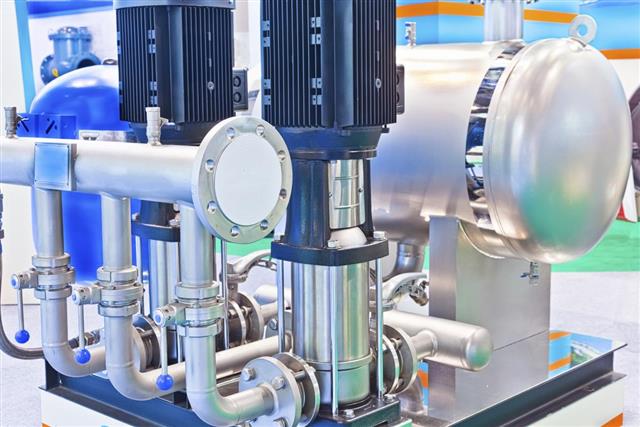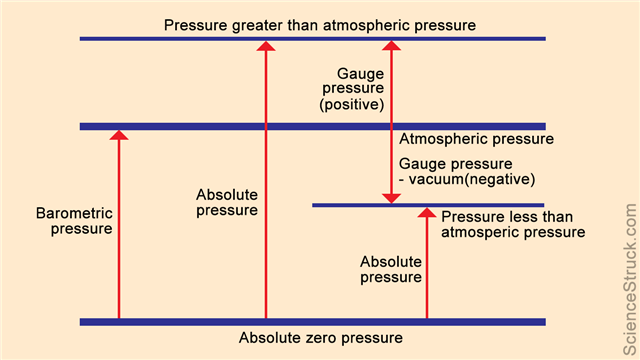
Force applied per unit area of any surface is called pressure. Absolute pressure refers to the measurement of pressure at absolute zero, whereas gauge pressure refers to the measurement of pressure at atmospheric pressure.
Did You Know?
Many differences exist between absolute and gauge pressure. However, same scale is used for measurement of both types.
Pressure measurement finds its applications in day-to-day life. It mainly deals with measuring the pressure and vacuum. A simple example can be our vehicle tires, for which air pressure must be checked regularly. Pressure can be absolute, gauge, and differential.
Let us consider Patm, Pabs, Prel to be atmospheric, absolute, and relative (gauge) pressure, respectively for reference. Atmospheric pressure is calculated based on the position of air molecules in the atmosphere. Note that Patm depends on altitude. It increases with decreasing altitude and decreases with increasing altitude. However, the standard value of atmospheric pressure is taken as 1 atm.
Consider the diagram given below. The bottom most line of the diagram depicts absolute zero pressure. This pressure can have value anywhere from absolute zero to pressure having magnitude greater than the atmospheric value. Gauge pressure, on the other hand, is relative and extends from below the atmospheric pressure to a value above it.
Absolute Pressure Vs. Gauge Pressure
Absolute Pressure
➜ Absolute pressure is defined as the pressure measured against the zero pressure of a vacuum.
➜ It is cited against perfect vacuum.
➜Formula for absolute pressure
Absolute Pressure = Gauge Pressure + Atmospheric Pressure
Pabs = Prel + Patm
➜ Absolute pressure is used mainly to measure pressures for aircraft’s, etc.
➜ Units for measurement of absolute pressure are psia and kpaa. Wherein ‘a’ is the suffix given.
➜ This is the absolute value of the measured pressure.
➜ Absolute pressure is measured from zero (zero reference.)
➜ Changes in atmospheric pressure doesn’t affect absolute pressure.
➜ Absolute pressure cannot be negative.
➜ It is measured by using a manometer or barometer.
➜ Examples are altimeter, air pressure, measurement of deep vacuum pressures by scientists.
Gauge Pressure
➜ Gauge pressure is defined as the pressure measured against the zero atmospheric pressure.
➜ It is cited against the ambient air pressure.
➜Formula for gauge pressure
Gauge Pressure = Absolute Pressure – Atmospheric Pressure
Prel = Pabs – Patm
➜ Gauge pressure is used mainly for conventional purposes.
➜ Units for measurement of gauge pressure are barg, kPag, and psig. Wherein ‘g’ is the suffix given.
➜ This is the relative value of the measured pressure.
➜ Gauge pressure is measured from atmospheric pressure level.
➜ Changes in atmospheric pressure affects gauge pressure.
➜ Gauge pressure can be positive or negative.
➜ It is measured by using a pressure gauge.
➜ Examples are measurement of blood pressure, or air pressure in vehicle tires.






